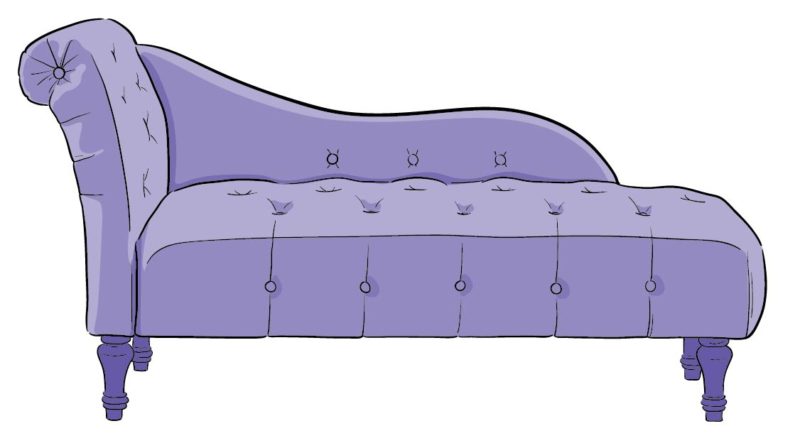You have to be home, I told my friend. She wanted to know how to furnish her apartment, which was nearly empty, as she was rarely there. Did I say rarely? I mean never. She took a sleeping bag to work, was a clinic volunteer on weekends. My busy friend, someone I didn’t bother unless she thought to bother me. But she was giving all that up—the clinic, the busy; she was going to slow way down and really take stock. You must know about that, she said to me, and I ran a soft hand through my clean and brushed hair. But if she was going to spend more time at home, first she needed a couch. You mean a sofa, I said. Or do you mean a divan? A sectional? A daybed? A chaise? I had so much fun with furniture that friends forgot what I actually did. I couldn’t remember either. What I enjoyed about furnishing was that the outcomes were infinite. You could rearrange a room until you no longer knew what had changed and what had not; it made no real difference. I said that to my friend and she called me wise. Then she gave me her keys and told me to go downtown to shop. When she returned, she hoped to meet her new daybed-divan-sofa-chaise. Among friends, my good taste was well known, and was, I suspected, the sole reason I still had friends. On topics other than furniture, I could rant and rage. Not everything is racial, someone finally said to me. Not everything is bad and ready to be done away with. It was very fair advice. But then what could I talk about? I was lost for a while. So in stores or online or with a magazine spread across my plump upper thighs, I began to stare at small things—vases, shot glasses, one-egg ramekins—and to debate them with myself. Symmetry is beauty, simplicity is also beauty, a light fixture could become a feature. Soon I discovered paint colors. I loved at first sight Vanilla Paste from Behr, next Smoked Oyster from Benjamin Moore, next Mizzle from Farrow & Ball. Custom closets became my jam. I saw no point in having space unless it could properly serve a need, and thus I saw no point in words unless they could properly fill space. Instead of the weather, I preferred to discuss walls—how to paint them, yes, but also how to knock one down and adorn the others with photos and junk. For my friend, now I went to all the downtown stores. The best gave me fabric samples, dozens of squares that I took home to lay out on the floor and inspect from a ladder at various heights. I considered asking my friend for input, but she was at a march, her last one. Did I want to go? she had asked, but I didn’t think it was a good idea. Something like that would just reactivate me, and I didn’t want my friend, who was in the process of deactivating, to see me at my worst. Then the two of us would be in trouble, ranting and marching until neither of us made it home. Eventually, I bought the perfect chaise in a luxurious dove-gray suede. When my friend came back, I was combing through the suede, pulling lint off with my fingernails. The thing about suede is that when rubbed against the grain, it becomes two-toned and ugly; the leather looks best when all of its hairs go the same way. Once my friend saw what I was doing, she understood immediately and came to help. It must have taken an hour to ensure that each fiber was flattened, four palms to the animal skin, moving at the same pressure and it was an hour well spent, we agreed, taking a step back to admire the chaise, now uniform.





